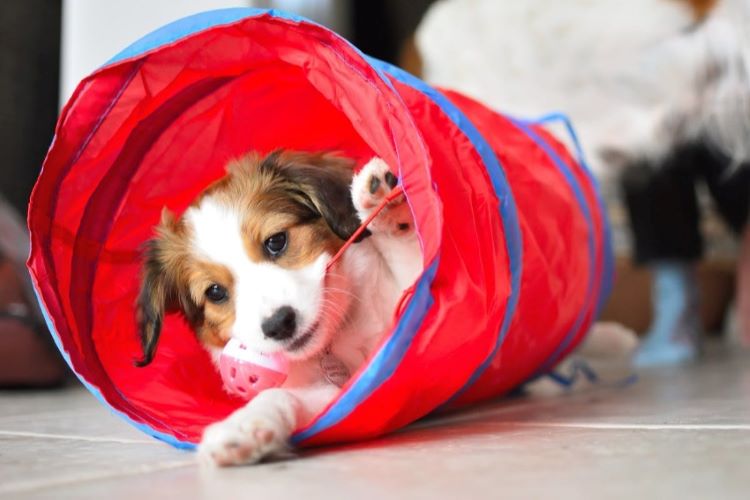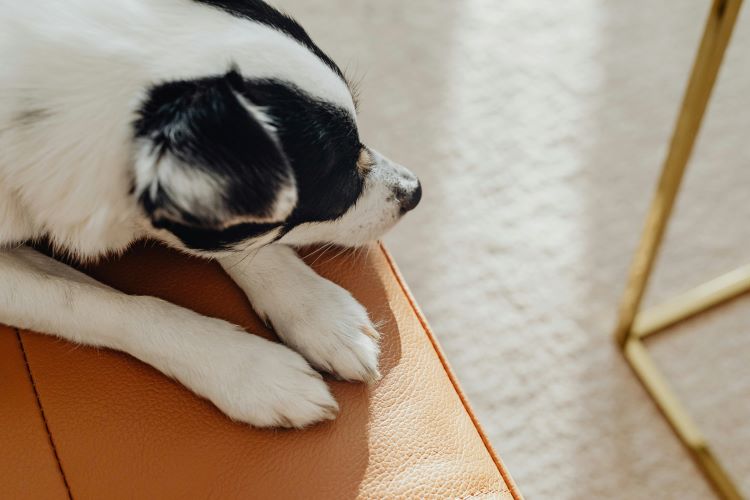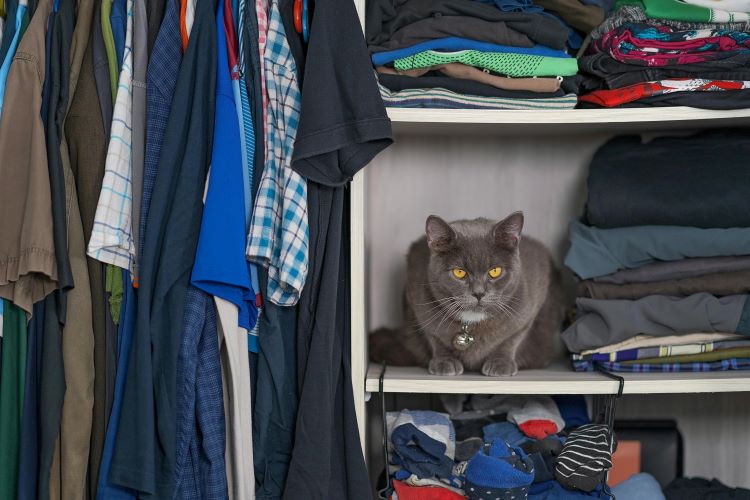Ready to help treat your pet to a healthy life?
How to Make Your Own Indoor Scavenger Hunt for Pets
By : Kelli Rascoe & Trupanion Staff | Updated Nov 7, 2024

Just like humans, pets can become bored with the same old routine every day. Even though dogs and cats are considered creatures of habit, it's good for their mental enrichment to shake things up every now and then. One great way to do this is setting up your own indoor scavenger hunt for your pet!
This fun and interactive activity is a wonderful way to interact and bond with your furry friend. And in addition to providing some physical exercise, it's a great form of enrichment. Plus, if you happen to be stuck indoors (especially in the colder months), this quick DIY indoor scavenger hunt guide may be just what you and your pet need.
DIY scavenger hunt ideas for dogs and cats
There are a lot of different things you can do to create your own cat or dog scavenger hunt. It all depends on your space, the tools (or toys) you have at your disposal, and of course the amount of time you're willing to spend on the whole project. Looking for ideas? Keep your pet entertained around the house with these easy and fun options for an indoor pet scavenger hunt:
Sprinkle treats around the house
If you and your pet need an afternoon pick-me-up, consider hiding treats and encourage them to seek it out. This gives you both the opportunity to stretch your legs and gives your pet a small reward. Also, it’s beneficial for all family members to move and stay active if you’re stuck indoors. Boredom may set in for your best friend, and the search for treats may help motivate them. Consider starting off slow and rewarding more as your pet becomes accustomed to the game. Also, you can create different levels of difficulty, which keeps everyone entertained.
Hide your pet’s favorite toys
Chances are, your best friend has a favorite toy or stuffed animal. So, why not incorporate their belonging into an interactive game. For example, work as a team to find their favorite items. To begin the game, start with the same toy until your pet fully understands the concept. After a few times in a row, you can start to add more toys. Consider rewarding with a game of toss or chase afterward.
Interactive toys
Interactive toys are a fun way to add surprise to any indoor scavenger hunt with your family. Imagine your pet’s looking for a toy, and they get a surprise treat. Consider what your pet likes and plan accordingly. Pet tech toys may range from full motion to an interactive automated toy on the ground.
A hunt with obstacles
Incorporating obstacles into your scavenger hunt can help provide mental enrichment for your pet as well as get them more exercise. Add a pet tunnel, set up the couch cushions like ramps (only if you're okay with your pet running over them, that is), create hurdles, etc. Now's the time to be creative!
A timed hunt
If your pet enjoys the activity, you can time the hunts to see how quickly they find everything. You could even turn it into a regular game and time your pet's progress, varying the hiding spots each time.

7 tips to make your pet scavenger hunt a success
Before you go about making a scavenger hunt for your pet, there are several things you should consider (both for fun and safety).
1. Choose the right space
First, you'll need to decide where to set up your pet scavenger hunt. For example, do you want to keep it all contained to one room, or do you want to incorporate different rooms for added adventure? Either way, you'll need to make sure that your pet has plenty of room to roam and run around (assuming they get excited once the hunt is on). We'll go over safety in more detail in just a bit, but it's important to make sure the space is safe and free from hazards to your pal. After all, you don't want to ruin a fun time with a trip to the emergency animal hospital.
2. Pick the right rewards
Getting your pet engaged in your scavenger hunt all boils down to providing them with the right motivation. As we mentioned above, toys and treats work well with this game. Consider using your pet's favorite treats as rewards or hiding their toys as treasures for them to find. If you have a toy that treats can be inserted into (like a puzzle toy), even better!
Keep in mind that some pets will naturally be more motivated in this activity than others. Be patient, and don't force your pet to play a game they're really not interested in.
3. Plan your hiding spots carefully
Start with easy-to-find locations, especially if your pet is new to this kind of activity. Make the initial prizes visible, if not a little hard to reach. Gradually increase the difficulty by hiding treats in more challenging spots. Good hiding spots include behind furniture, under pillows, inside boxes, or in your pet's favorite hangout spots.
4. Encourage exploration
To help your pet find the hidden items, you can create a scent trail by lightly rubbing the treat or toy on the floor or furniture leading to the hiding spot. If your pet seems unsure, encourage them by leading them close to the first hiding spot. Praise them when they find the treat or toy. Depending on your pet's training and understanding of general commands, you may also be able to use verbal prompts like "find it!" to add to the excitement.
To help keep your pet engaged, always finish each discovery with plenty of praise and pats!
6. Make it challenging
As your pet gets better at finding the hidden items, increase the complexity by using different levels (like hiding something on a chair or a shelf) or by adding decoy items. You can also place the treats or toys inside puzzle feeders or under a blanket to make them work a little harder. For cats, you can get even more creative by hiding treats in places they can climb and explore: closets, cat trees, shelves, etc. Just be sure it's somewhere that you don't mind them getting into!
One of the best things about pet scavenger hunts is that you can repeat the activity indefinitely and change it up each time to keep things fresh. Personalize it to the needs of both you and your pet. For example, you can choose to have a five-minute scavenger hunt in the morning or a longer game in the afternoon. It’s a great way to break up your day while also having fun and staying active at the same time.

7. Always practice safety
Safety is an absolute must with every new pet activity, especially one that encourages them to run around your house. Follow these important tips for safety during your indoor pet scavenger hunt:
- Clean the space before setting up any part of the scavenger hunt. Clear the area of any potential choking hazards and any small objects that aren't part of the hunt.
- Ensure that all hiding spots are safe and accessible for your pet.
- Avoid small or tight spaces where your pet might get stuck.
- Only hide pet toys. Never use child toys or other objects that may have parts unsafe for chewing or pawing.
- Don't overdo it on the snacks! If hiding treats, balance out the portions according to your pet's breed and size.
- Talk with your veterinarian if you're unsure about anything; whether it's the toys and/or treats you're hiding or the setup of the scavenger hunt itself.
- Never leave your pet unattended during the scavenger hunt! Always supervise the game to help prevent any accidents or unnecessary pet stress.
- Since you never know what will happen to your pet even with the best precautions, consider pet insurance. This can help cover veterinary costs in case of surprise accidents or other things that may affect your pet's health.
Learn more about activities to do indoors with your pet! Check out these five fun indoor dog activities.
